Ceramic cookware is an excellent choice for non-toxic cookware. Long-lasting and easy to use, ceramic cookware comes in all shapes and sizes. Some ceramic cookware is made of pure ceramic, and some features a metal such as hard anodized aluminum coated with fire-hardened clay.
Table of Contents
The type of ceramic cookware that’s right for you will depend on what you like to cook and how you like to cook it, i.e. in the oven, on the stovetop, as well as the kind of stove you have (pure ceramic won’t work on an induction stovetop, for example).
To help you find ceramic cookware that’s right for your circumstances, here are our picks for the best ceramic cookware sets. Curious about how we rate products? Click here to view our methodology, which at its core, is about voting with our dollars to fight climate change.
The Best Ceramic Cookware Sets
- Robust third-party testing for forever chemicals
- More affordable than competitors
- Well made, easy to cook with
- Works on induction cooktops
- Longer lasting non-stick ceramic coating
- Sustainable packaging
- Heavier than Caraway’s non-stick pans (a sign of quality but also tougher to maneuver)
- Only three fry pan sizes with non-stick coating
- Not dishwasher safe
- Oven-safe only to 200 F.
Alva’s Maestro collection includes a set of three ceramic coated non-stick, non-toxic frying pans and a non-stick skillet. These pans are genuinely non-stick and are robustly made using some recycled materials by a sustainable, well-regarded, long-standing Belgian cookware companry.
The Maestro ceramic pans are totally free of PFAS and the company is transparent about third-party testing for heavy metal leaching.
Like most ceramic coated pans, the Maestro pans aren’t dishwasher safe as this can chip and crack the ceramic coating. The pans are oven safe to 200 F however, so you can pop your pan in the oven to keep things warm as needed.
Alva offers the Maestro non-stick ceramic pans in three sizes, plus the skillet:
- 8-inch non-stick Maestro fry pan
- 9.5-inch non-stick Maestro fry pan
- 11-inch non-stick Maestro fry pan
- 9.5-inch (3.3 qt.) non-stick skillet with lid.
The fry pans have straight sides to maximize cooking surface. They have stay-cool handles (that actually stay cool), and are compatible with all cooktops, including induction, thanks to the 3-ply stainless steel base. The pan heats up fast and spreads heat evenly for excellent results even when frying more delicate things like soft tofu (and, I imagine, fish).
Alva Cookware ships everything in recycled and recyclable packaging with minimal or no plastic.
The Maestro frying pan is still a huge hit in our house, even after more than a year of almost daily use. Both my wife and I love this pan, thanks to its sturdy, smart, and attractive design, and how well it maintains the non-stick surface.
The Alva Maestro non-stick pan coating is much more non-stick than even seasoned cast iron or carbon steel (both of which we love), and the non-stick coating has easily outlasted the Always Pan (see our review) which costs significantly more and isn’t as robustly made.
Read more about my experience with Alva Cookware here, and why I trust their test results.
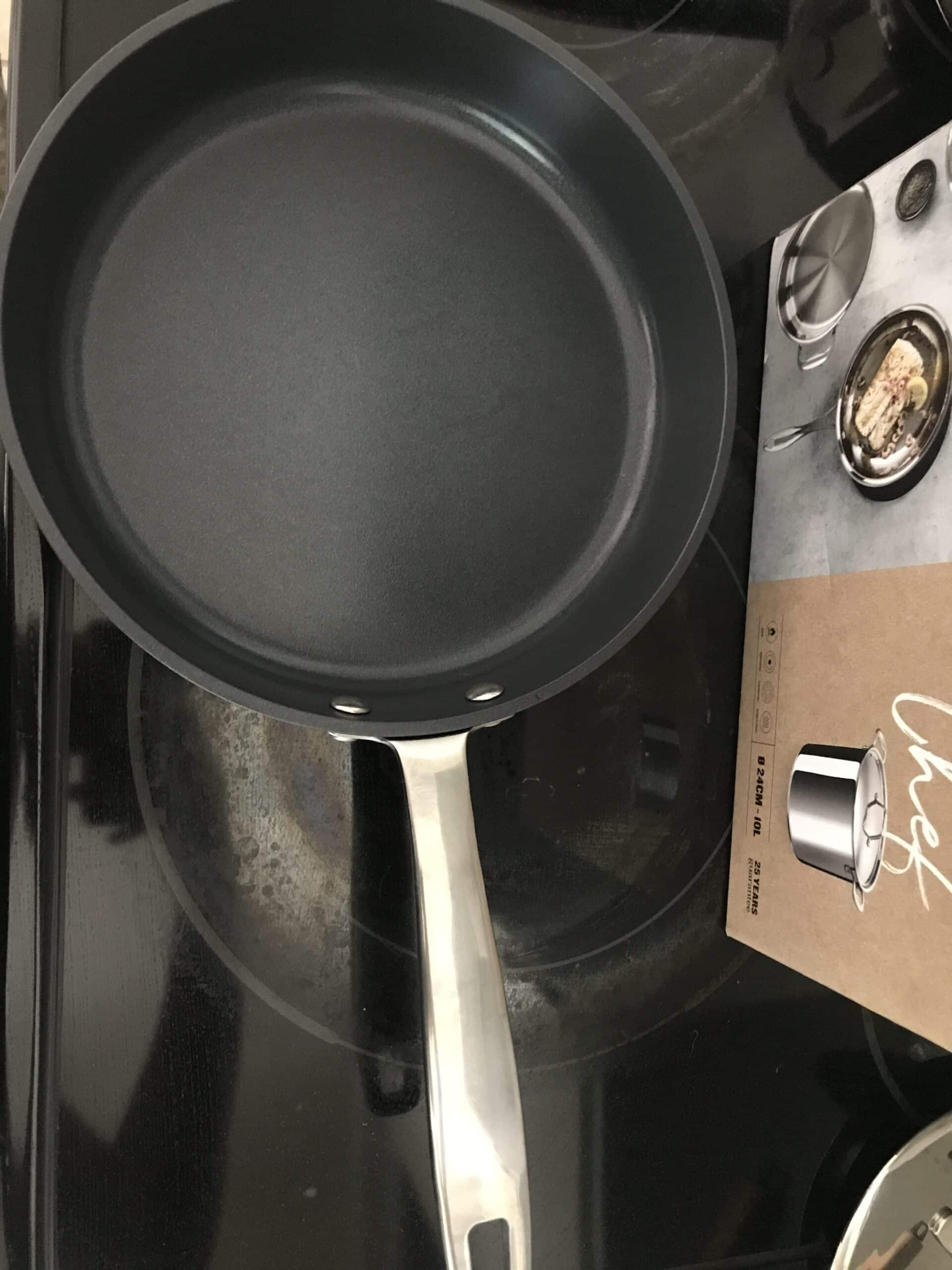
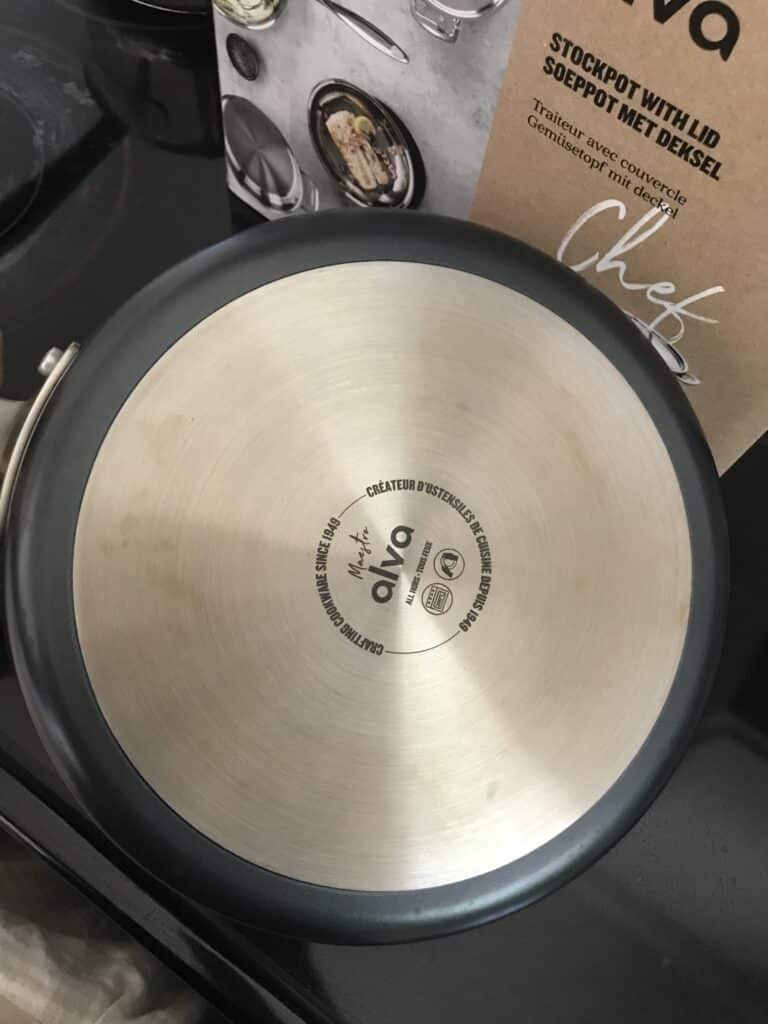
- Free of forever chemicals and heavy metals
- Provided third-party lab testing
- Very convenient
- Non-stick
- Green packaging
- Lightweight
- Nice color options
- Discolors over time
- Coating can scratch with use
- Not built to hand down to future generations. After using the products for a year, we are concerned with longevity.
Caraway is a bit of a newcomer in the cookware space but the company has carved out a niche with its gorgeous mostly ceramic pots and pans that are truly non-toxic. I asked Caraway for copies of any third-party toxicity testing and they immediately sent documents showing that all their cookware passes with flying colors. No PFAS here, and no lead, cadmium, or other chemicals of concern.
One reason I love Caraway is because the company was wise enough to use ceramic-coated aluminum with a steel base. This means the cookware is light, oven-safe, and can be used on all cooktops, including energy-efficient induction stovetops. Pure ceramic cookware doesn’t work on induction.
The Caraway Cookware Set includes:
- Unique Caraway Storage Sytem
- 10.5 inch Fry Pan (see review here)
- 3 qt Sauce Pan
- 4.5 qt Sauté Pan
- 6.5 qt Dutch Oven
The Dutch Oven and Sauce Pan share a lid, which is a great way of minimizing material use and cupboard space. And speaking of cupboard organization, Caraway includes a unique storage system with every cookware set, so you’ll never have the struggle of jumbled pots and pans again!
Caraway also pays attention to sustainability by shipping all of its products without any single-use plastics. Instead, it uses recycled and recyclable cardboard and reusable cork trivets. It even helps customers find a local recycling facility for old cookware!
Read our full review of Caraway cookware here, as tested by John and family. We also review the Caraway bakeware set here.
Xtrema is offering LeafScore readers 10% off their purchase using coupon code LEAFSCORE at checkout!
- Built with care to last for years
- Transparent with third-party lab testing
- PFOA, PFAS, and PTFE free
- Safe for the dishwasher, oven, stovetops, and fridge/freezer
- Beautiful aesthetic
- Meets California prop 65 standards
- Heavy
- Conducts heat poorly
- Made in China
- Won’t work on induction stoves
If you’re looking for the best, most eco-friendly, non-toxic pure ceramic cookware range, check out Xtrema®. This American-made line of eco-friendly, non-toxic cookware is ceramic through and through, with no:
- Leachable heavy metals
- PFOA, PTFE, or other PFAS
- Glues or polymers
- Coatings or dyes.
Xtrema® inspects every shipment for leachable heavy metals and its cookware is FDA-approved and meets California Prop 65 standards, meaning that it is certified free from over 800 problematic compounds. Xtrema® cookware is also environmentally friendly as it is created using renewable raw materials and green manufacturing practices.
With Xtrema® ceramic cookware, you can cook food easily on a low heat, because pure ceramic retains heat better than other cookware and helps food to cook evenly, inside and out. Just be sure to warm pans slowly and keep temperatures low to moderate (and add you oil after the pan is warmed).
While Xtrema® cookware is not non-stick, the smooth, non-porous, ceramic glaze makes for easy cooking, once you’re used to cooking on a low to moderate heat. Xtrema® is super easy to clean. If food does stick, it’s safe to use abrasive cleaners such as steel wool, baking soda, and even Ajax without risk of scratching the surface.
The Xtrema® ceramic collection includes a wider variety of items than most ceramic cookware collections:
- Skillet/frying pan (View Price on Xtrema®)
- Sauce pan (View Price on Xtrema®)
- (My favorite!) tea pot (View Price on Xtrema®)
- Wok (View Price on Xtrema®)
- The full set (View Price on Xtrema®).
We tested Xtrema cookware in our home kitchen and while there’s a lot to love about these pure ceramic pots, we do have some reservations. For instance, the Xtrema Wok conducted heat poorly, and because it is pure ceramic, Xtrema cookware doesn’t work with induction cooktops.
Xtrema cookware is also very heavy. So if you have arthritis or otherwise have difficulty handling cumbersome cookware, Xtrema likely isn’t for you.
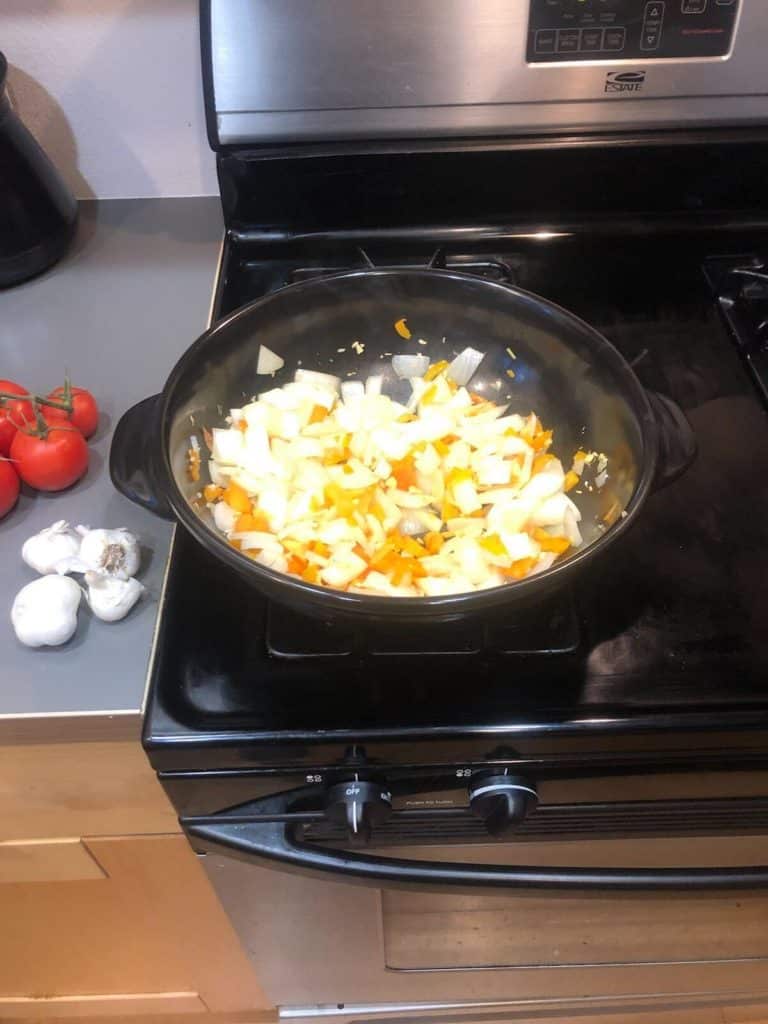
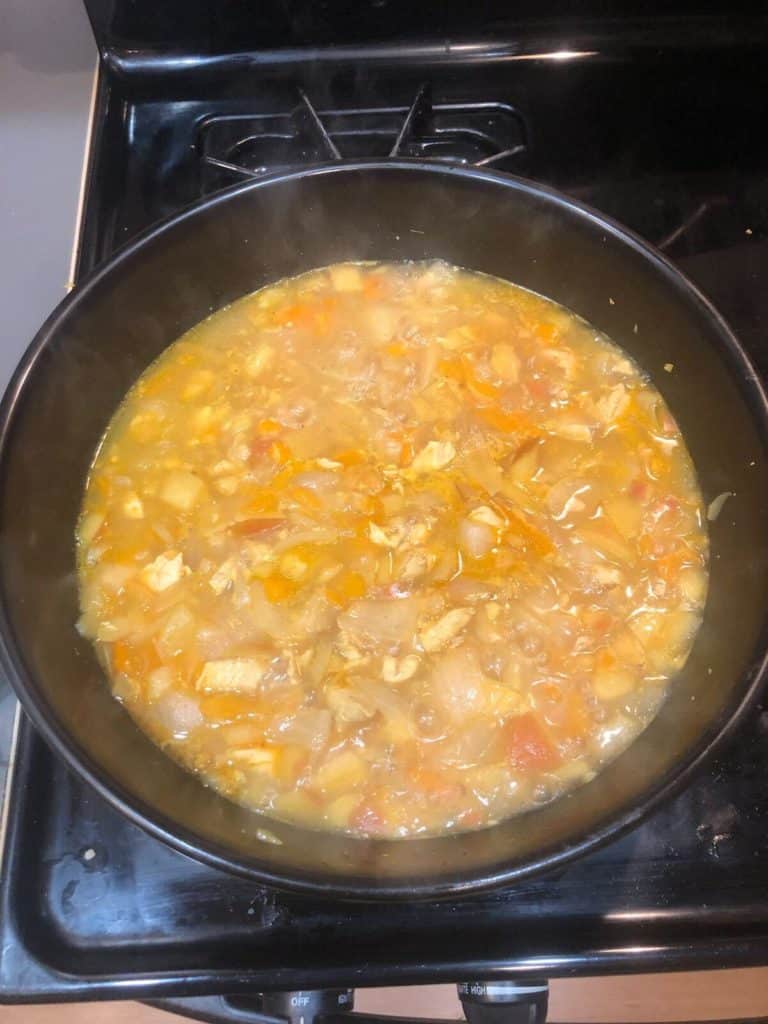
Read our full review of Xtrema cookware here, as tested by John and family.
Xtrema is offering LeafScore readers 10% off their purchase using coupon code LEAFSCORE at checkout!
- Pure ceramic
- Made in USA
- Easy to clean
- Non-toxic
- Non-reactive to acidic foods
- Can be used to cook, serve, and store food
- Somewhat fragile
Corning Ware (now CorningWare®) was the original ceramic cookware and was accidentally invented by Donald Stookey in 1953. Called Pyroceram, this white glass-ceramic material was capable of withstanding a thermal shock (sudden temperature change) of up to 450 °C (840 °F).
CorningWare is also:
- Non-reactive to acidic foods
- Non-porous and doesn’t leach metal or any other substance into foods
- Easy to clean by hand or in the dishwasher.
Because of its non-reactivity, pyroceram is excellent for cooking tomato sauces and white wine reductions. Unlike with metal pots and pans, this cookware does not alter the flavor of food.
Pyroceram was marketed as Corning Ware from 1958 onwards, with the most recognizable piece a classic white ceramic casserole dish with the blue cornflower logo. Sadly, the original Corning Ware is no longer in production.
If you are looking for pure ceramic cookware to use on a stovetop, find some yard sale Corning Ware (made prior to 2000), or choose CorningWare®’s stovetop range made after 2008. Or look at Emile Henry’s new Flame range – see below.
All in all, CorningWare® is one of the most eco-friendly, safe, non-toxic types of cookware around. It was made in the USA and remains a great choice for eco-friendly, non-toxic cooking. It’s all but guaranteed that if you buy any CorningWare® it’s already been used and hasn’t required additional energy or resources to create.
Our top picks:
- Pyroceram Blue Cornflower 4-piece Glass Ceramic Cookware Set (View Price on Amazon)
- StoveTop Pyroceram 4-piece Casserole Set (View Price on Amazon).
- Stovetop compatible (some cookware only)
- Long-lasting
- Ceramic inside and out
- Non-reactive to acidic foods
- Resistant to thermal shock (some cookware only)
- Dishwasher and microwave safe
- Not all suitable for induction cooktops or hot plates
If you like Le Creuset, you’ll love Emile Henry. This French company makes high-quality, stylish ceramic cookware. I particularly like the Emile Henry Flame range of stovetop-suitable ceramics. These offer a fantastic alternative to hard-to-track-down classic CorningWare®.
Emile Henry dishes are designed to resist oven heat up to 480 F (250 C) but are not intended for use over direct flame or hot plates. Emile Henry’s new range of HR cookware is resistant to thermal shock, so it can be put in the oven directly from the freezer. These pots are also dishwasher safe and microwave safe.
The classic Emile Henry dish is their ruffled tart dish, the unique design of which makes it easy to turn out an excellent pie without needing to grease the dish before baking. The company now makes six main types of cookware, including:
- Ruffled Tart Dish (View Price on Amazon)
- Bread Cloche (View Price on Amazon)
- Tagine (View Price on Amazon)
- Pizza Stone (View Price on Amazon)
- Oven Dish (View Price on Amazon)
- Stewpot (View Price on Amazon)
The attractive glazed pots are available in a variety of colors and designs, including the Potato Pot, which can be used to cook potatoes, chestnuts, and various other delights right on the stovetop. It is suitable for induction hobs, if used with an induction disk, and can also be used in the oven.
The Emile Henry glaze is highly resistant to scratching, so it’s fine to use metal utensils with these pots. Some cracks may form in the glaze with use, but this isn’t a design flaw and doesn’t affect performance.
Because the inside coating of Emile Henry pots is ceramic and non-reactive, the pots are ideal for more acidic foods. This includes sauces and vinegar reductions that would discolor stainless steel or leach metal from cast iron and carbon steel and affect the flavor of food.
With knowledge, care, and a little luck, Emile Henry cookware could last a lifetime, but do be careful about thermal shock with some items. Classic CorningWare® is a better option in terms of durability and strength, but the Emile Henry range, while traditionally made, has a more modern design, similar in some ways to Le Creuset.
Final Thoughts
You might be wondering why I haven’t included one of the most popular brands for metal-ceramic cookware, Le Creuset. This company offers that classic French farmhouse kitchen look in a gorgeous array of colors to suit any kitchen aesthetic. But there are some potential downsides to Le Creuset, such as cadmium contamination in certain models.
If you love the look of Le Creuset but want a third-party tested non-toxic ceramic cookware set, Alva and Caraway are worth checking out.
All in all, ceramic cookware is a great choice for a non-toxic, eco-friendly kitchen. Not all ‘green’ non-stick coatings are actually eco-friendly or safe, however, so be sure to do your research or ask a question in the comments if you’re unsure.
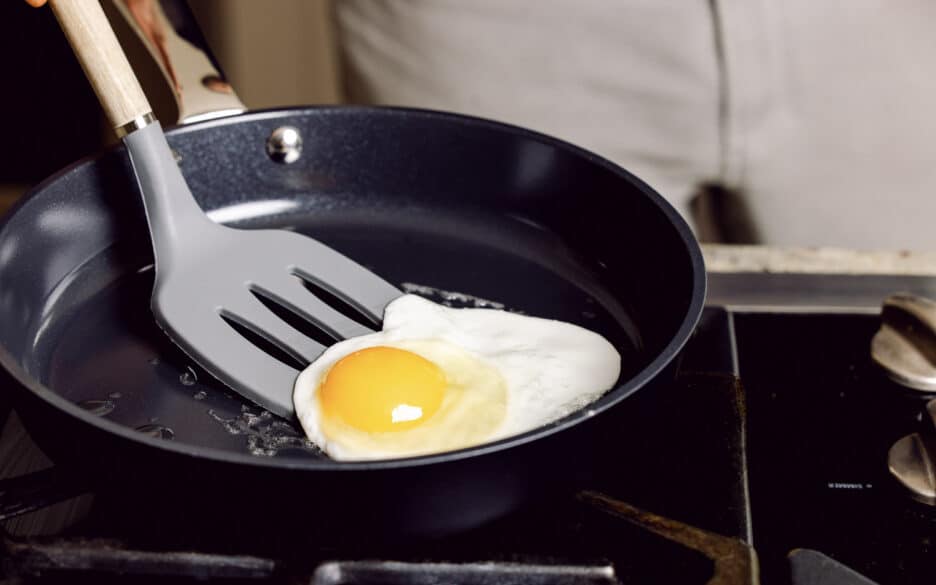
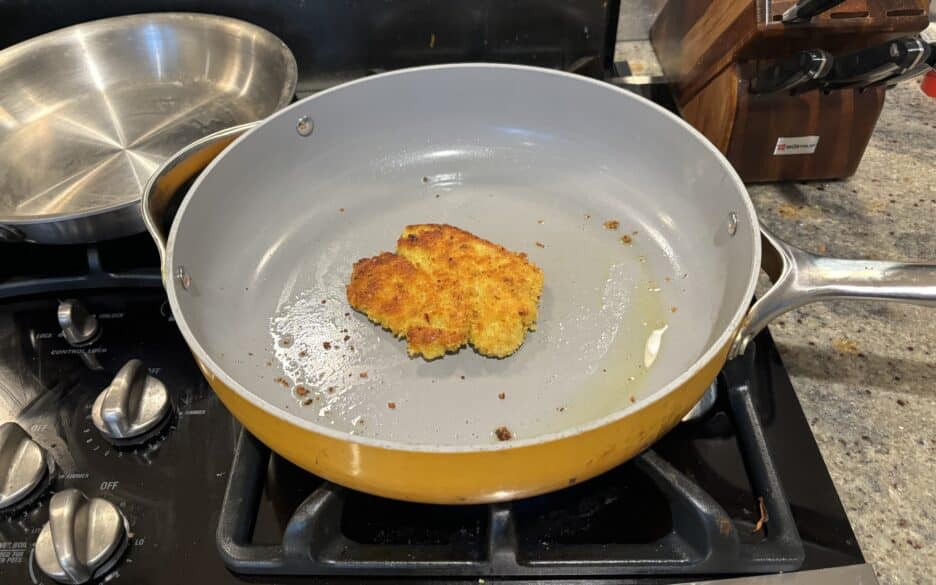
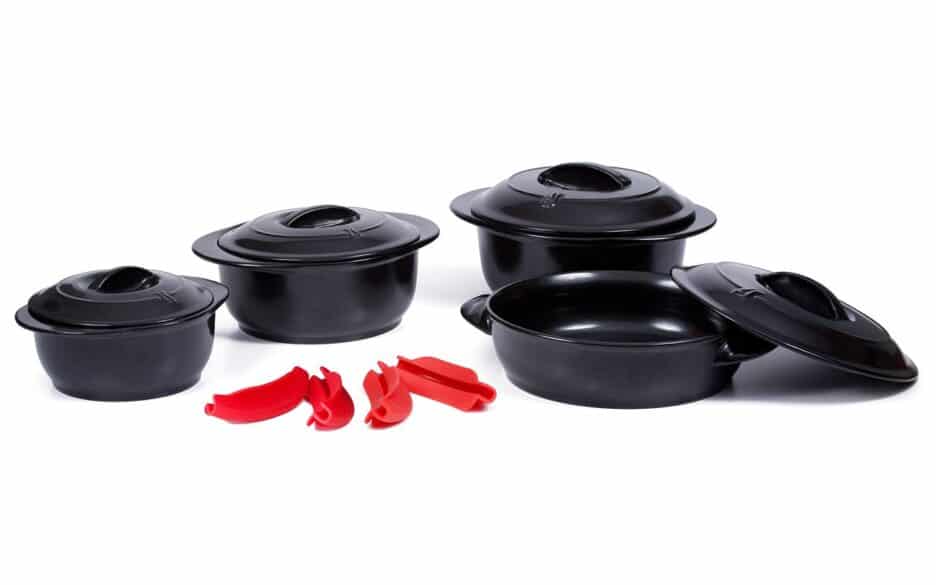
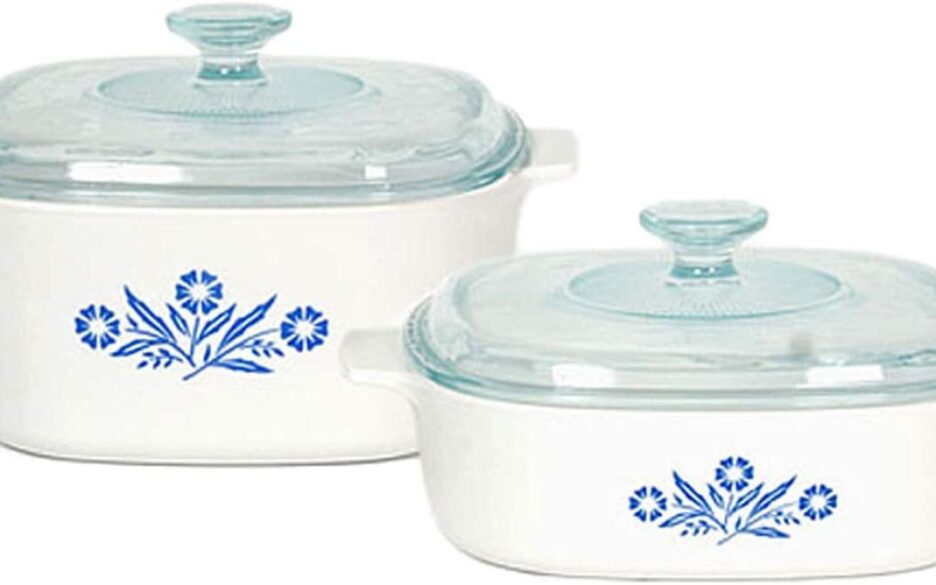
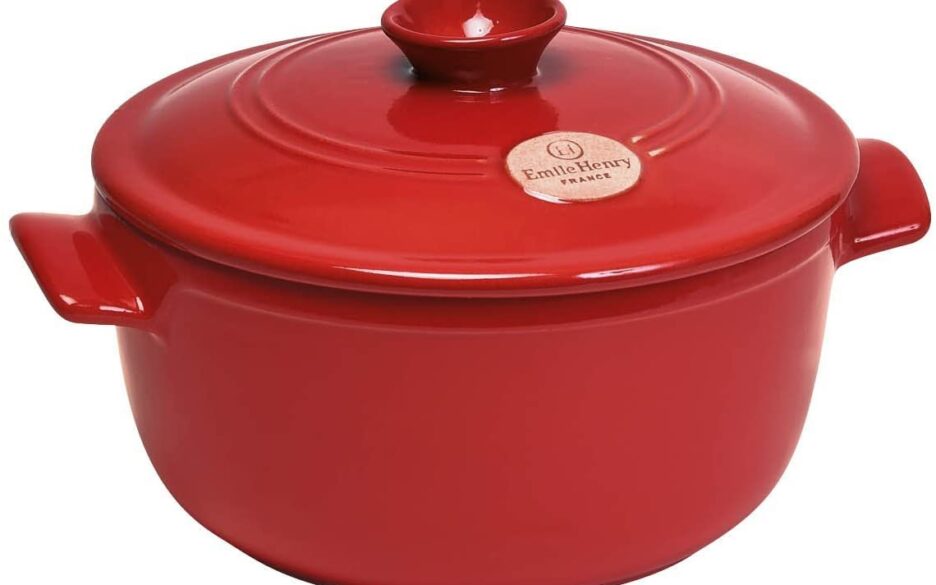
Xtrema is not made in the USA, it’s made in China
What concerns me about Caraway, although beautiful, is that its made with Aluminum. Aluminum is a known neurotoxin so I am trying to find a porcelain enamel or ceramic with stainless steel which is less toxic. Thoughts?
Aluminum is a neurotoxin, yes, but to be toxic it has to first get into the body. With coated aluminum pans that are intact and well cared for, this is unlikely to happen. Indeed, Caraway performs leach testing that shows just that: no leaching of aluminum.
Thank you for this, I arrive at this site while reading on Greenpan. I think we needs more recommendations for outside US please as Xtrema and Caraway has very limited availability here in Australia
Just learned about this website, and I love all recommendations and explanations. I do agree with Andry. For instance, it is very hard to find products in Europe that are as well documented as these examples here.
Xtrema IS NOT American made. Per their website:
“Xtrema is designed in the United States of America but handcrafted in our ceramics manufacturing facility in Southern China, the country that founded ceramics over 8,000 years ago. Han dynasty, 206 BC – 220 AD. Some experts believe the first porcelain was made in Zhejiang province during the Eastern Han dynasty.”
TB, here is our candid write up over concerns with Xtrema: https://www.leafscore.com/eco-friendly-kitchen-products/cookware/xtrema-cookware-greenwashed-or-genuinely-non-toxic/
Have you reviewed the Ozeri ceramic fry pans?
Hey Jo, Leigh answered your question, here: https://www.leafscore.com/eco-friendly-kitchen-products/cookware/ozeri-cookware/